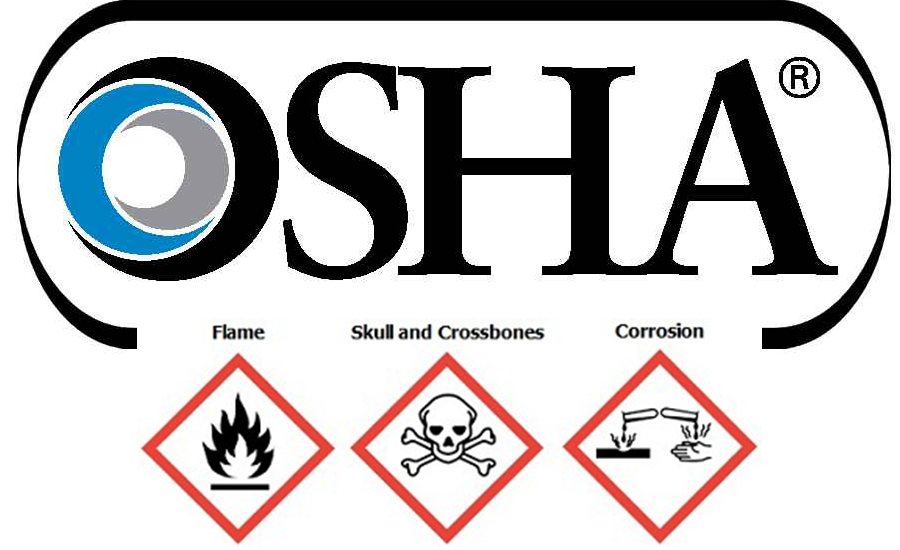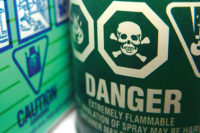Are you up to speed on OSHA’s HazCom standard?

Here are the questions asked most frequently about OSHA’s Hazard Communication standard – along with the agency’s answers.
What are temporary agency employers required to do to meet HAZCOM requirements?
The emporary agency employer would be expected to provide generic hazard training and information concerning categories of chemicals employees may potentially encounter. Host employers would then be responsible for providing site-specific hazard training pursuant to sections 1910.1200(h)(1) and1926.59.
Can MSDSs be stored on a computer to meet the accessibility requirements of HAZCOM?
If the employee's work area includes the area where the MSDSs can be obtained, then maintaining MSDSs on a computer would be in compliance. If the MSDSs can be accessed only out of the employee's work area(s), then the employer would be out of compliance with paragraphs (g)(8) or (g)(9) [of the Hazard Communication Standard].
What are the container labeling requirements under HAZCOM?
Under HCS, the manufacturer, importer, or distributor is required to label each container of hazardous chemicals. If the hazardous chemicals are transferred into unmarked containers, these containers must be labeled with the required information, unless the container into which the chemical is transferred is intended for the immediate use of the employee who performed the transfer.
How does HAZCOM apply to pharmaceutical drugs?
The HCS only applies to pharmaceuticals that the drug manufacturer has determined to be hazardous and that are known to be present in the workplace in such a manner that employees are exposed under normal conditions of use or in a foreseeable emergency. The pharmaceutical manufacturer and the importer have the primary duty for the evaluation of chemical hazards. The employer may rely upon the hazard determination performed by the pharmaceutical manufacturer or importer.
When is the chemical manufacturer required to distribute MSDSs?
Hazard information must be transmitted on Material Safety Data Sheets (MSDSs) that must be distributed to the customer at the time of first shipment of the product. The Hazard Communication Standard also requires that MSDSs be updated by the chemical manufacturer or importer within three months of learning of "new or significant information" regarding the chemical's hazard potential.
What is considered proper training under the HAZCOM standard?
Employees are to be trained at the time they are assigned to work with a hazardous chemical. The intent of this provision (1910.1200(h)) is to have information prior to exposure to prevent the occurrence of adverse health effects. This purpose cannot be met if training is delayed until a later date. The training provisions of the HCS are not satisfied solely by giving employee the data sheets to read. An employer's training program is to be a forum for explaining to employees not only the hazards of the chemicals in their work area, but also how to use the information generated in the hazard communication program. This can be accomplished in many ways (audiovisuals, classroom instruction, interactive video), and should include an opportunity for employees to ask questions to ensure that they understand the information presented to them. Training need not be conducted on each specific chemical found in the workplace, but may be conducted by categories of hazard (e.g., carcinogens, sensitizers, acutely toxic agents) that are or may be encountered by an employee during the course of his duties. Furthermore, the training must be comprehensible. If the employees receive job instructions in a language other than English, then the training and information to be conveyed under the HCS will also need to be conducted in a foreign language.
What are the requirements for refresher training or retraining a new hire?
Additional training is to be done whenever a new physical or health hazard is introduced into the work area, not a new chemical. For example, if a new solvent is brought into the workplace, and it has hazards similar to existing chemicals for which training has already been conducted, then no new training is required. As with initial training, and in keeping with the intent of the standard, the employer must make employees specifically aware which hazard category (i.e., corrosive, irritant, etc.) the solvent falls within. The substance-specific data sheet must still be available, and the product must be properly labeled. If the newly introduced solvent is a suspect carcinogen, and there has never been a carcinogenic hazard in the workplace before, then new training for carcinogenic hazards must be conducted for employees in those work areas where employees will be exposed. It is not necessary that the employer retrain each new hire if that employee has received prior training by a past employer, an employee union, or any other entity. General information, such as the rudiments of the HCS could be expected to remain with an employee from one position to another. The employer, however, maintains the responsibility to ensure that their employees are adequately trained and are equipped with the knowledge and information necessary to conduct their jobs safely. It is likely that additional training will be needed since employees must know the specifics of their new employers' programs such as where the MSDSs are located, details of the employer's in-plant labeling system, and the hazards of new chemicals to which they will be exposed. For example, (h)(3)(iii) requires that employees be trained on the measures they can take to protect themselves from hazards, including specific procedures the employer has implemented such as work practices, emergency procedures, and personal protective equipment to be used. An employer, therefore, has a responsibility to evaluate an employee's level of knowledge with regard to the hazards in the workplace, their familiarity with the requirements of the standard, and the employer's hazard communication program.
Do you need to keep MSDSs for commercial products such as "Windex" and "White-Out"?
OSHA does not require that MSDSs be provided to purchasers of household consumer products when the products are used in the workplace in the same manner that a consumer would use them, i.e.; where the duration and frequency of use (and therefore exposure) is not greater than what the typical consumer would experience. This exemption in OSHA's regulation is based, however, not upon the chemical manufacturer's intended use of his product, but upon how it actually is used in the workplace. Employees who are required to work with hazardous chemicals in a manner that results in a duration and frequency of exposure greater than what a normal consumer would experience have a right to know about the properties of those hazardous chemicals.
What are the requirements and limits to using generic MSDSs?
The requirements for MSDSs are found in paragraph (g) of 29 CFR 1910.1200. MSDSs must be developed for hazardous chemicals used in the workplace, and must list the hazardous chemicals that are found in a product in quantities of 1% or greater, or 0.1% or greater if the chemical is a carcinogen. The MSDS does not have to list the amount that the hazardous chemical occurs in the product. Therefore, a single MSDS can be developed for the various combinations of ... [chemicals], as long as the hazards of the various... mixtures are the same. This "generic" MSDS must meet all of the minimum requirements found in 29 CFR 1910.1200(g), including the name, address and telephone number of the responsible party preparing or distributing the MSDS who can provide additional information.
What is the application of HAZCOM to an office environment?
Office workers who encounter hazardous chemicals only in isolated instances are not covered by the rule. OSHA considers most office products (such as pens, pencils, adhesive tape) to be exempt under the provisions of the rule, either as articles or as consumer products.
Is a material safety data sheet (MSDS) required for a non-hazardous chemical?
MSDSs that represent non-hazardous chemicals are not covered by the HCS. Paragraph 29 CFR 1910.1200(g)(8) of the standard requires that "the employer shall maintain in the workplace copies of the required MSDSs for each hazardous chemical, and shall ensure that they are readily accessible during each work shift to employees when they are in their work area(s)." OSHA does not require nor encourage employers to maintain MSDSs for non-hazardous chemicals. Consequently, an employer is free to discard MSDSs for non-hazardous chemicals.
Looking for a reprint of this article?
From high-res PDFs to custom plaques, order your copy today!





